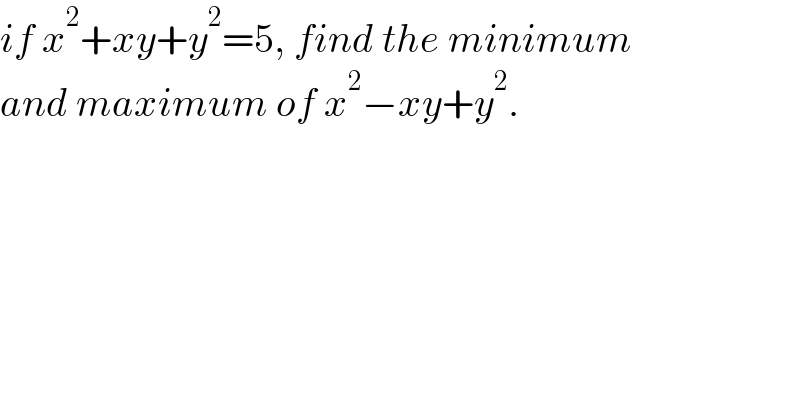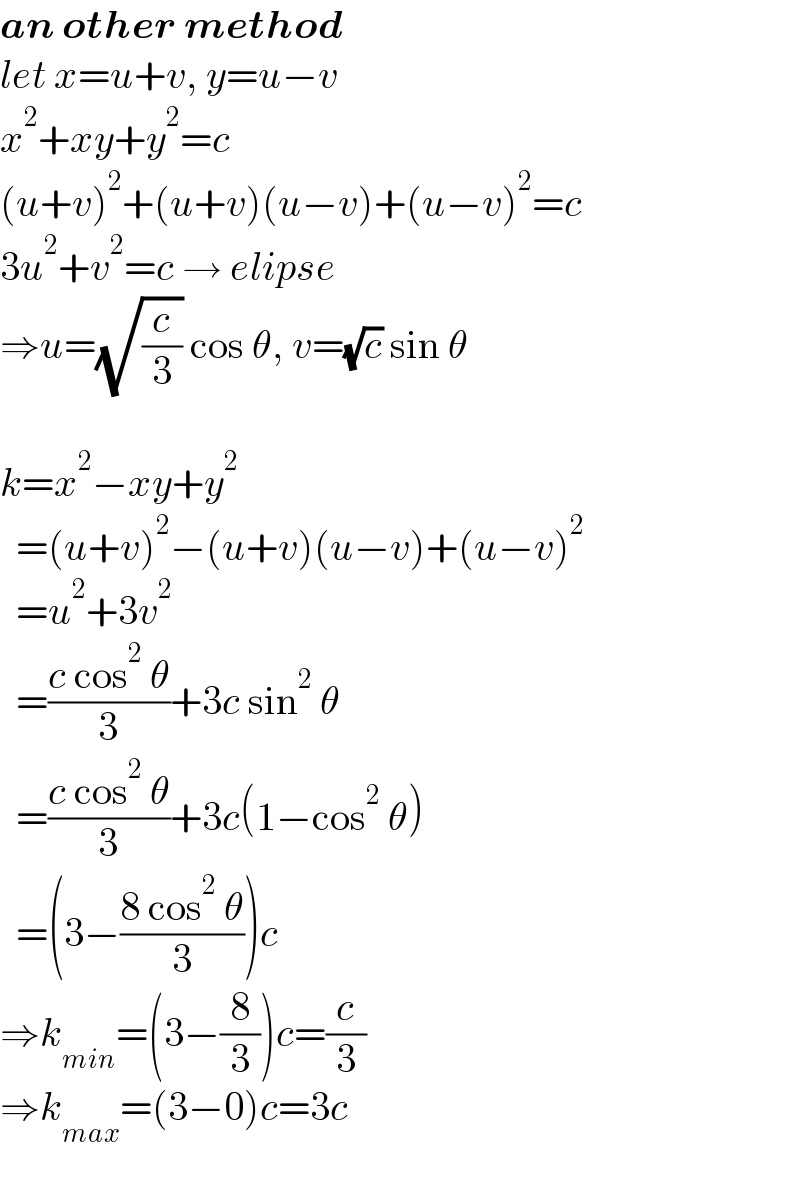
Question and Answers Forum
Question Number 177130 by mr W last updated on 01/Oct/22

Commented by Frix last updated on 01/Oct/22

Commented by Frix last updated on 01/Oct/22

Commented by mr W last updated on 01/Oct/22

Commented by Frix last updated on 01/Oct/22

Answered by mr W last updated on 01/Oct/22
![x^2 +xy+y^2 =c=5 ...(i) let x^2 −xy+y^2 =k ...(ii) [(i)−(ii)]/2: ⇒xy=((c−k)/2) ⇒y=((c−k)/(2x)) x^2 +((c−k)/2)+(((c−k)/(2x)))^2 =c x^4 −(((c+k)/2))x^2 +(((c−k)/2))^2 =0 Δ=(((c+k)/2))^2 −4(((c−k)/2))^2 ≥0 (k−3c)(3k−c)≤0 ⇒(c/3)≤k≤3c i.e. (c/3)≤ x^2 −xy+y^2 ≤3c with c=5: minimum=(5/3) maximum=3×5=15](Q177168.png)
Commented by Strengthenchen last updated on 06/Oct/22

Answered by mr W last updated on 02/Oct/22

